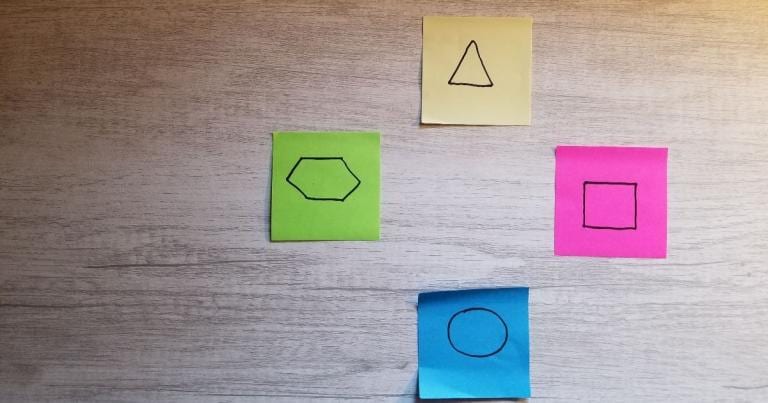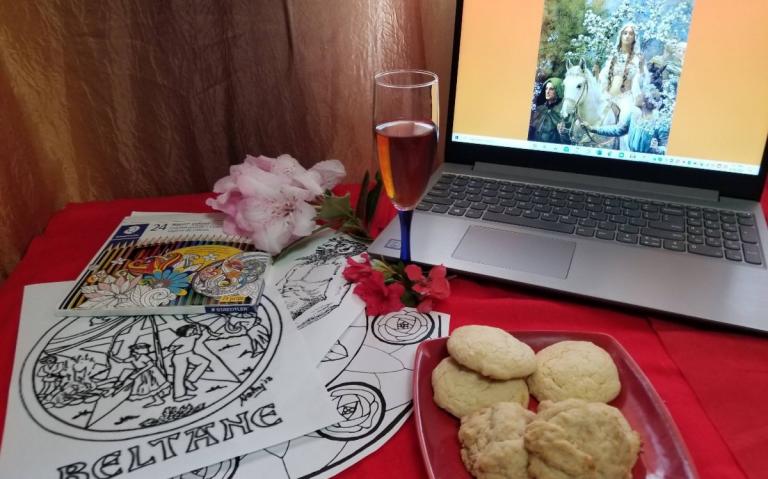My Pacific Northwest house is surrounded by a semi-urban forest. Every day I walk in my woods and breathe with the trees. This week I am breathing the death of trees. Fires rage all along the west coast. The local forest isn’t threatened by flame but the smoke has blown here. The sky is orange. The air smells like burning pine and cedar. Ash falls on the dry earth. The neighborhood is eerily quiet as the children are all locked indoors. Even the bees are not flying, sheltering in place in the hives, they navigate by sun and there is no light.
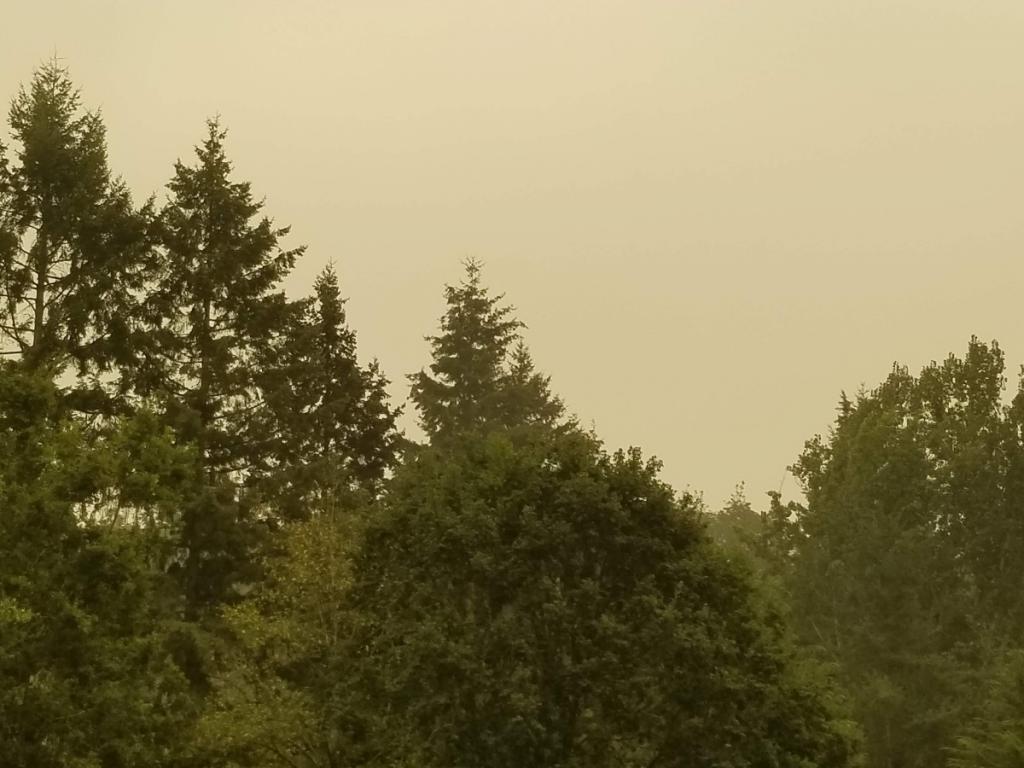
Everyone I know who honors the divine is praying. I hear the call to help and turn to the gods. As a Pagan Magician I practice deity yoga, also called theurgy and sitting practice. I sit with Kemetic deities, Hellenistic deities and Tantric deities. The Kemetic and Hellenistic traditions are reconstructions from survivals, the Tantric tradition is alive and has rules which I respect. Here are the practices I created for this crisis. Anyone who is called to help and resonates with one of these is encouraged to use it. Each of these practices can be done as a ritual at the altar, as a meditation, or both.
Make a Rain Altar and Take Your Seat
Deity practice can use an altar as a focal point. The altar can have an image of one or more deities, an altar cloth, candles, and decorations and offerings. For a rain altar you can use a blue cloth and a bowl of water.
Contemporary yoga meditations start with the instruction to take your seat. This is also an ancient practice that is returning to contemporary Paganism. “Take your seat” is a literal instruction, sit in a chair or on a pillow or on the floor. Sitting practice invites us to drop within ourselves to find our connection to the sacred. To start the practice, imagine yourself as a tree: your roots push into the earth, your branches reach into the sky, a protective bark surrounds you.
Tefnut, Egyptian Goddess of Moisture
The story of the Eye of Ra was told in ancient Egypt in many places and times. In The Great Goddesses of Egypt Barbara Lesko tells us that the goddess who is Ra’s eye can be Sekhmet, Hathor, or Tefnut. When the story is told about Tefnut, the return of the eye from the southern desert describes the return of the annual flood which brought fertility to the Nile river basin and restored the dry earth.
Tefnut Altar
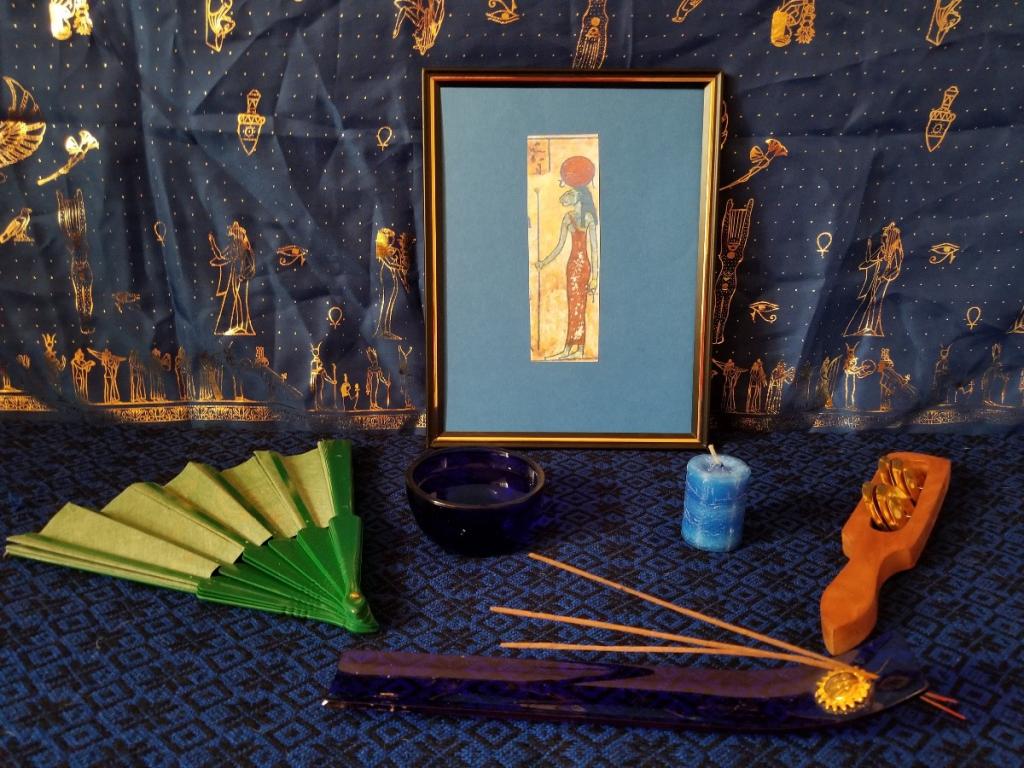
You will need an image of Tefnut and a candle. You can print out the image. Any color of candle works, however red is a good choice for Kemetic work in general and for Tefnut as the Eye of Ra in particular.
Place a bowl of water on the altar. If you have cedar incense you can place a stick or cone in an incense burner. For tools you can use a fan and a rattle. If you don’t have a ritual fan you can use a simple paper one. Make a rattle by filling a bottle with rice, beads or buttons. If you have a sistrum you can use that.
Tefnut Ritual
Sitting at the altar, take four deep breaths. Exhale tension and anything that distracts you right now. Inhale calm and know you are supported and held by the earth and air around you.
Light the candle.
Recite the story.
Story: How Tefnut left and returned
Tefnut is the Eye of Ra. One day she became angry with Ra. She left him and flew into the desert, taking all the rain and all the water and all the moisture with her. In the desert she took on her lion form. She pounded the earth and howled with anger. Ra sent Tefnut’s brother Shu, the air, to appease her. Shu went to Tenut and sang to her and soothed her. Appeased, Tefnut returned to the land, bringing the water and moisture and rain. Wherever she went the people rejoiced at her return.
Make offerings
I sing the praise of Tefnut, beautiful Lady of Water. Shake rattle or sistrum.
Tefnut, you have left the land, you have traveled to the desert, you have taken the lion form and roar with rage.
Tefnut, you have left the land without moisture, the fields are barren, the forests are in flames.
Tefnut, I come to you as Shu, your beloved brother, to honor you and soothe you.
Tefnut, return to the land. Let your fiery breath subside. Bring your moisture to the land again. Bring the healing rains to soften the earth. Bring the soothing rains to quench the flames.
The air moves around you, surrounding you with loving care. The gentle wind blows bringing you back to us. Wave the fan.
Tefnut, I sing the song for you, I make music for you, I shake the sistrum for you. Shake the rattle or sistrum, repeating Tefnut’s name. Shake rattle or sistrum.
Tefnut, I offer you incense, the fragrance of delight. Light incense.
Tefnut, I rejoice in your return, I offer you water, I offer water to the Lady of water. Hold up bowl of water.
Center the energy
Sit for a few moments at the altar. When you are ready, take a deep breath and exhale completely, then blow out the candle.
Allow the incense to burn out. Pour the water onto the earth.
Tefnut Meditation
You may do the sitting practice on its own. You can also do it while sitting at the altar after you have performed the Tefnut Ritual.
If you have not already done so, take four deep breaths. Exhale tension and anything that distracts you right now. Inhale calm and know you are supported and held by the earth and air around you.
Close your eyes.
Say “Tefnut” slowly four times. See and/or feel Tefnut appear before you as a golden energy. She wears the face of a lion. In one hand she holds a staff, in the other she holds an ankh. She wears a cobra crown on her head and she is dressed in red linen.
Now see and/or feel Tefnut flying over the forests carried by a very gentle wind. Wherever there is fire a soft rain pours out from Tefnut to extinguish the flames.
See and/or feel Tefnut return in front of you. Now her golden light envelopes you, surrounding you and filling you. Hold yourself quiet to receive her wisdom. She may offer you a gift or an insight.
When you are ready, absorb the golden light into your heart. Sit for a moment with your hands over your heart.
When you are ready, take four deep breaths and open your eyes.
The Hyades, Hellenistic Bringers of Rain
The Olympian most associated with rain is Zeus. The specific epithet for Zeus as rain-bringer is Zeus Hyes. This refers to the god Hyas whose name is also used as an epithet for Dionysos and Sabazius, a clear indication that Hyas is his own deity.
Hyas has sisters called the Hyades. The story goes that when he was killed his weeping sisters were turned into stars. The Hyades star cluster sets in November which also marks the start of the rainy season, so the nymph sisters were called the Rainy Ones.
The Theoi.com page on the Hyades notes that one ancient mythographer associated the Hyades with the Pleiades and named seven sisters of Hyas. This fits into the pattern described by Munya Andrews in her book The Seven Sisters of the Pleiades. Stories about the Pleiades often involve seven sisters and one other figure, who might have chased them into the stars, or might be a lost sibling. The Hyades and Pleiades star clusters both form part of the constellation of Taurus. Both are clear in this image from NASA.
This ritual calls on the Hyades as rain bringers and lists the seven names associated with the Pleiades. The names Pedile and Thyone end in an E which is pronounced, PED-ee-lee and THY-oh-nee.
Hyades Altar
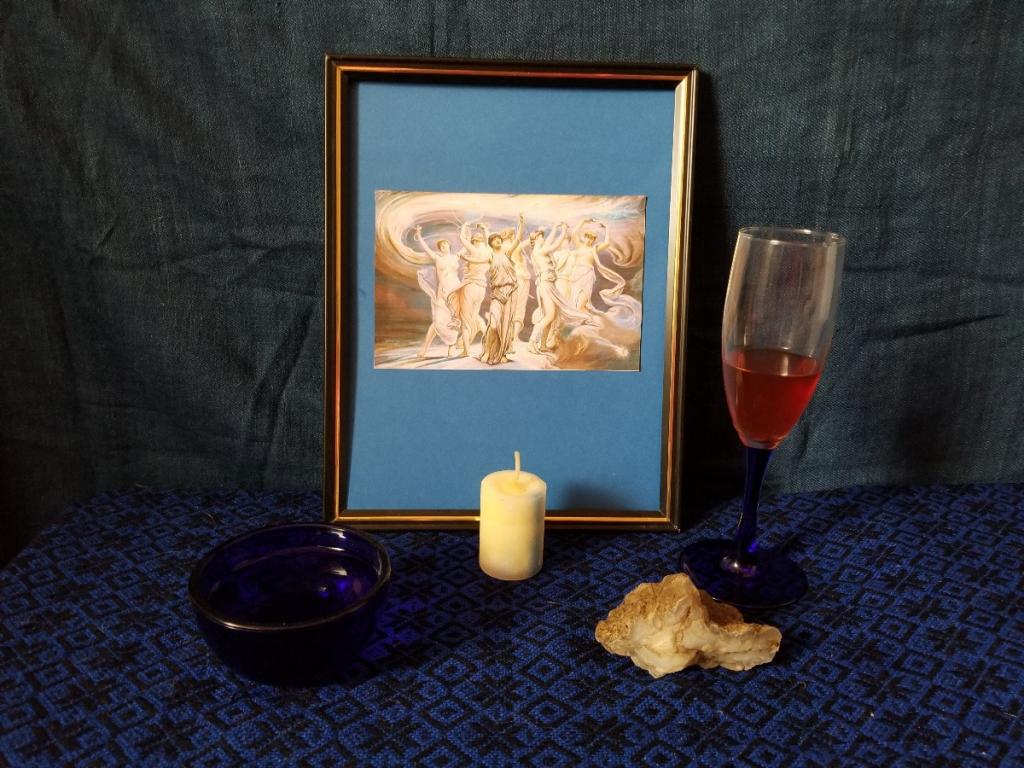
You will need an image of the Hyades and a candle. For the image of the Hyades you can print out a picture of rain nymphs or a photo of the star cluster of the Hyades. Any color of candle will work, white or blue are good choices. Place a bowl of water on the altar. Also have a small glass of wine and a large stone. If you don’t have these you can substitute a glass of water and for wine and a plate for the stone. You will also need a printout of the names of the Hyades: Ambrosia, Eudora, Pedile, Coronis, Polyxo, Phyto, Thyone.
Hyades Ritual
Sitting at the altar, take four deep breaths. Exhale tension and anything that distracts you right now. Inhale calm and know you are supported and held by the earth and air around you. When you are ready, light the candle.
Invocation
I call on you, Hyades, Rain Bringers!
I call on Ambrosia, Eudora, Pedile, Coronis, Polyxo, Phyto, Thyone.
Come, gentle nymphs, and bring your rain where it is needed.
Make a petition
In your own words ask the Hyades to quench the forest fires and protect the trees and animals and humans who are threatened by the fires.
Dip your hand into the water and sprinkle it around. Say, “Hyades, bring your rain.”
Make offerings
Pour a bit of wine onto the stone and say, “I make the libation.”
Sit for a moment with your hands over your heart absorbing the energy of the ritual. When you are ready, blow out the candle. Pour the water out onto the earth. You may drink the wine or pour it out onto the earth.
Hyades Meditation
You can do this meditation at the altar after you have performed the Hyades Ritual. You may also do this sitting practice on its own.
Take four deep breaths. Exhale tension and anything that distracts you right now. Inhale calm and know you are supported and held by the earth and air around you.
Name the Hyades: Ambrosia, Eudora, Pedile, Coronis, Polyxo, Phyto, Thyone.
Close your eyes.
See and/or feel the seven nymphs flying over the forests carried by a very gentle wind. Wherever there is fire a soft rain pours out from them to extinguish the flames.
See and/or feel the nymphs return to hover over your head. They dissolve into a mist which gently showers you with their blessings. Sit for a moment with your hands over your heart.
When you are ready, take four deep breaths and open your eyes.
Shatakshi, Devi with A Hundred Eyes
The Kemetic tradition is reconstructed, the Hellenistic tradition is re-emerging, but the Mother Religion has been practiced in India for thousands of years without interruption. The Devi Bagavatam tells the story of Shatakshi, the Devi with One Hundred Eyes, and Shakumbari, the Bringer of Food. In the province of Karnataka she takes the form of Banashankari, Shakumbari of the forest.
Because the religions of India are living traditions it is important to respect their rules and requirements. Rather than importing the Devis and Devas (Goddesses and Gods) into Pagan practice we can approach them using their own forms of worship.
Shakumbari’s main festival is held in the winter. The next Shakumbari Jayanti falls on January 28 2021. I engage in this practice on the festival day. I am also doing it now for the benefit of the forests. Although I am a Shri Vidya student I perform this not as a Hindu or Tantric practice but as a devotional with sincere intent.
Shatakshi-Shakumbari Altar
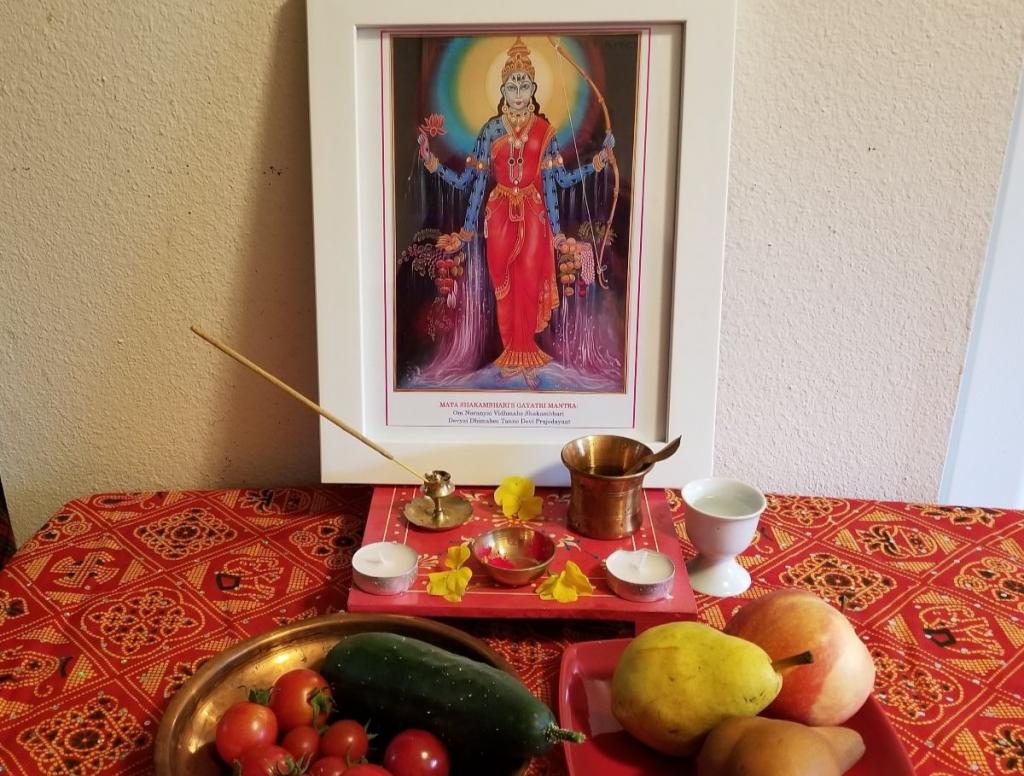
Prepare an altar with: an altar cloth, an image of Shatakshi-Shakumbari, one or more candles, a bowl of water, a stick or cone of incense, and a small tray of fruits and vegetables. You can also have a small bowl of kumkum. You can order kumkum online but if you want to proceed immediately you don’t have to wait for it. If you have turmeric you can substitute it for kumkum.
Sitting at the altar, take four deep breaths. Exhale tension and anything that distracts you right now. Inhale calm and know you are supported and held by the earth and air around you.
Shatakshi-Shakumbari Devotional
Light the candles.
Recite the story.
Story: How Devi Saved the World
Once a demon who wished to control everything captured the sacred scriptures that instruct people how to make offerings. Without offerings from humans the gods were not able to bring rain to the earth. A terrible drought parched the land for a hundred years.
In desperation the gods and humans called on the Great Mother. She appeared in the form of Shatakshi, her blue-black skin covered with innumerable eyes. The desperate plight of the earth brought tears to her eyes. She poured water down from her eyes onto the parched land for nine days and nine nights.
In two of her hands she held a bow and arrows and a lotus buzzing with bees. In the other two hands she brought vegetables and fruits, so she is called Shakumbari, the one who bears vegetables. She gave this food to the people to sustain them until the vegetables would grow again.
Then she took up arms to defeat the demon and brought peace to the world.
Make a petition
In your own words ask the goddess as Shatakshi to come to the aid of the forest, and ask the goddess as Shakumbari or Banashankari to nourish the animals and trees and humans who are suffering because of the fires.
Make offerings
Lift one of the candles and offer the flame to the image. Offer water and incense. Dip a finger into the kumkum or turmeric and dot the forehead of the image.
Offer the tray of food, then eat the food. (In the case of vegetables you may include them in your next dinner).
When you have completed the offerings sit for a moment. Place your hands over your heart.
Shatakshi-Shakumbari Meditation
You may choose to do this meditation on its own without an altar. You may also do it during the ritual after you make the petition and before you make the offerings.
Close your eyes. See and feel Shatakshi in front of you. She may offer you a gift or an insight. Hold yourself quiet to receive her wisdom.
When you are ready, take four deep breaths and open your eyes.
May the gods sustain the trees and creatures and all who dwell within the forests.


